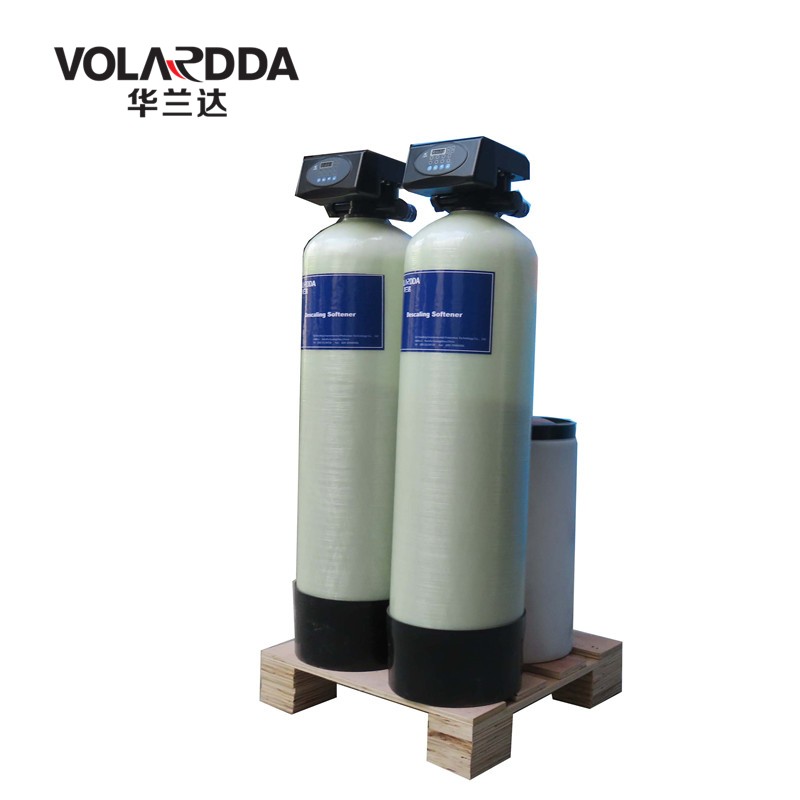Softened Water - Softened water treatment equipment knowledge
First, what is softening water
In our daily life, we often see the inner wall of the kettle will have scale after long use. What is the reason for this? It turns out that the water we use contains a lot of inorganic salts, such as calcium, magnesium salts and so on. These salts cannot be found by the naked eye in water at normal temperature. Once they are heated and boiled, a lot of calcium and magnesium salts will be precipitated as carbonate, which will form scale when they cling to the wall of the pot.
We usually refer to the content of calcium and magnesium ions in water as "hardness" this index to express. A hardness of 1 degree equals 10 milligrams of calcium oxide per liter of water. Water below 8 degrees is called soft, water above 17 degrees is called hard, and water between 8 and 17 degrees is called moderately hard. Rain, snow, rivers, rivers and lakes are soft water; springs, deep Wells and sea water are hard water.
Two, the difference between softening water and other water
Raw water refers to water that has not been treated. In a broad sense, the water before entering the water treatment process is also called the raw water of the water treatment. For example, the water sent from the source to the clarifier for treatment is called raw water.
Softened water refers to water whose hardness (mainly calcium and magnesium ions in water) has been removed or reduced to a certain extent. In the process of softening water, only the hardness decreases, but the total salt content remains the same.
Debrine refers to water in which salts (mainly strong electrolytes dissolved in water) are removed or reduced to a certain degree. Its electrical conductivity is generally 1.0 ~ 10.0µS/cm, resistivity (25℃) (0.1 ~ 1.0) ×106Ω·cm, and salt content is 1 ~ 5mg/L.
Pure water refers to water with strong electrolytes and weak electrolytes (such as SiO2, CO2, etc.) removed or reduced to a certain degree. Its conductivity is generally 1.0 ~ 0.1µS/cm, conductivity (1.01.0 ~ 10.0) ×106Ω·cm. The salt content is <1mg/L.
Ultra-pure water refers to water in which conductive media are almost completely removed, while non-dissociating gases, colloids and organic substances (including bacteria, etc.) are also removed to a very low degree. Its conductivity is generally 0.1 ~ 0.055µS/cm, resistivity (25℃) >10×106Ω·cm, salt content <0.1 mg/L. The (theoretical) conductivity of ideal pure water is 0.05µS/cm and the resistivity (25℃) is 18.3×106Ω·cm.
Three, what is softening water treatment?
The calcium and magnesium ions in the raw water are replaced by strong acid cationic resin, and then the boiler water filtered out by the softening water equipment becomes the boiler softened water with very low hardness.
Four, the working principle
1. Ion exchange method
(1) Method: The use of specific cation exchange resin, sodium ions will be replaced by calcium and magnesium ions in the water, due to the high solubility of sodium salt, so it can avoid the rise of temperature caused by the formation of scale.
(2) Characteristics and effects: the effect is stable and accurate, and the process is mature. The hardness can be reduced to zero.
(3) Application scope: in catering, food, chemical, pharmaceutical and other fields, air conditioning, industrial circulating water and other applications. The most commonly used standard method.
2. Electromagnetic method
(1) Method: A certain electric or magnetic field is applied in the water to change the characteristics of ions, so as to change the deposition speed of calcium carbonate (magnesium carbonate) and the physical characteristics of deposition to prevent the formation of hard scale.
(2) Features effect: equipment investment is small, convenient installation, low operating cost. The effect is not stable, there is no unified measurement standard, and because the main function is only to affect the physical properties of scale within a certain range, so the use time and distance of the treated water are limited.
(4) Scope of application: It is mainly used for the treatment of circulating cooling water in commercial (such as central air conditioning, etc.), and can not be applied to the treatment of industrial production and boiler recharge water.
